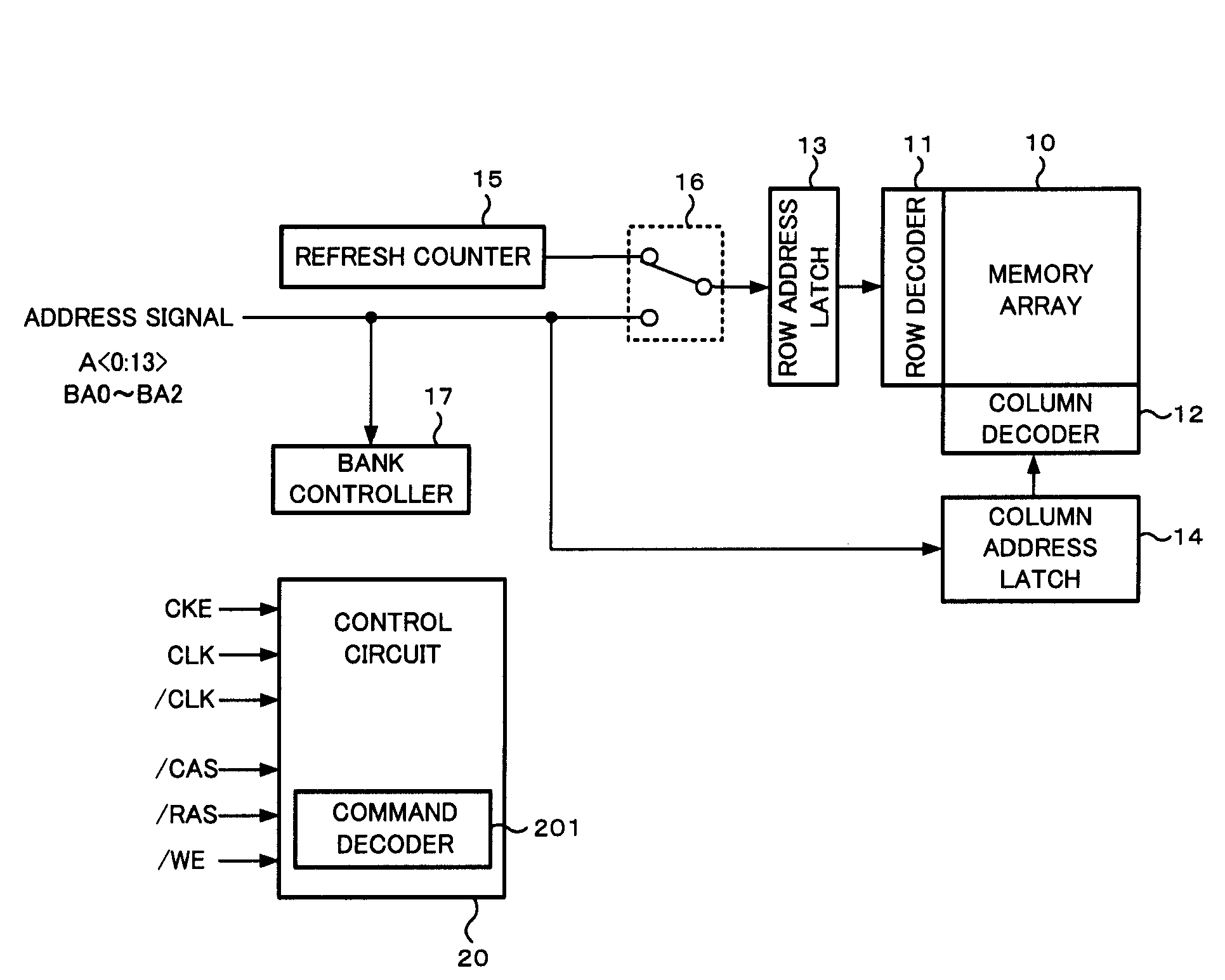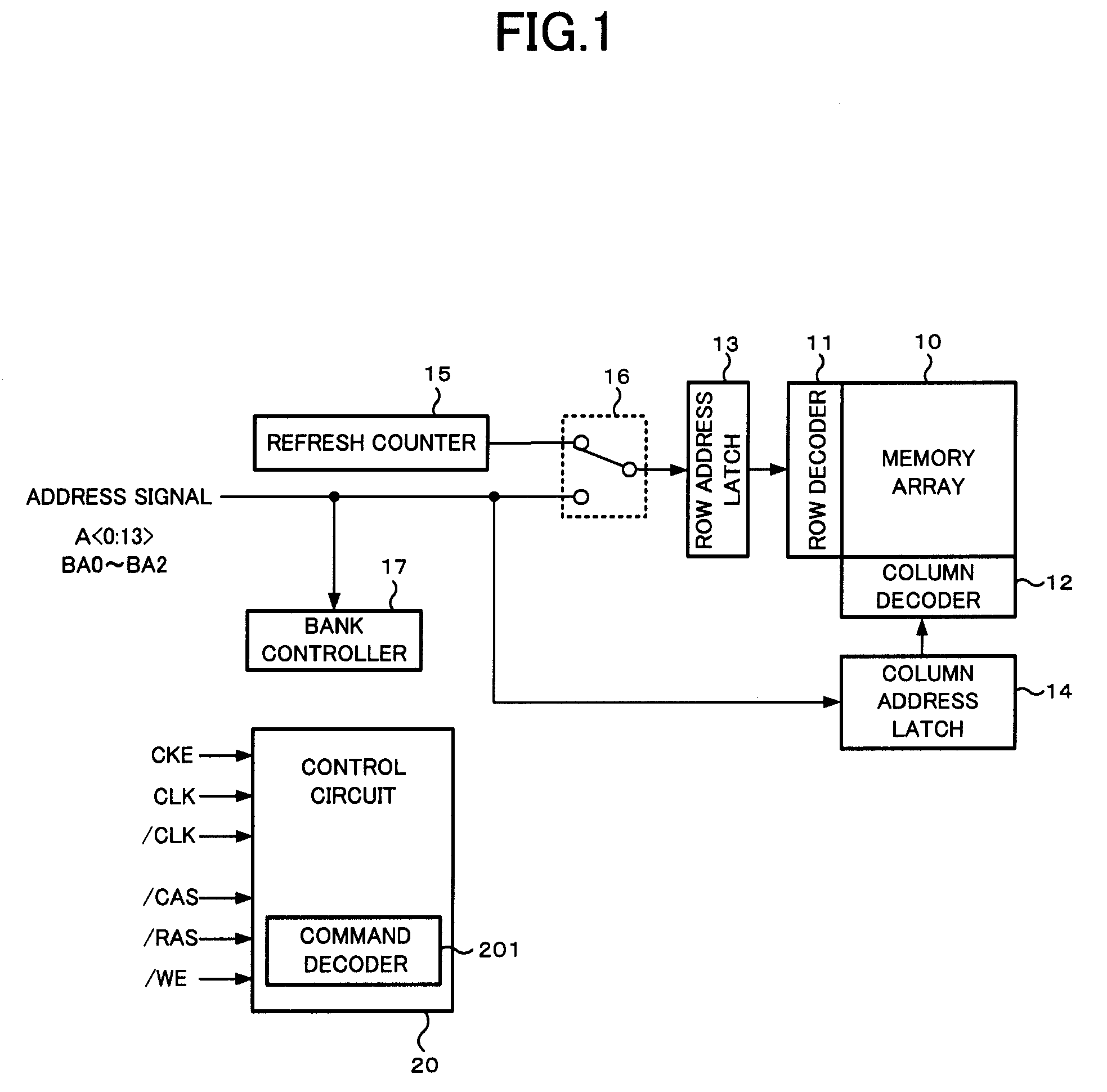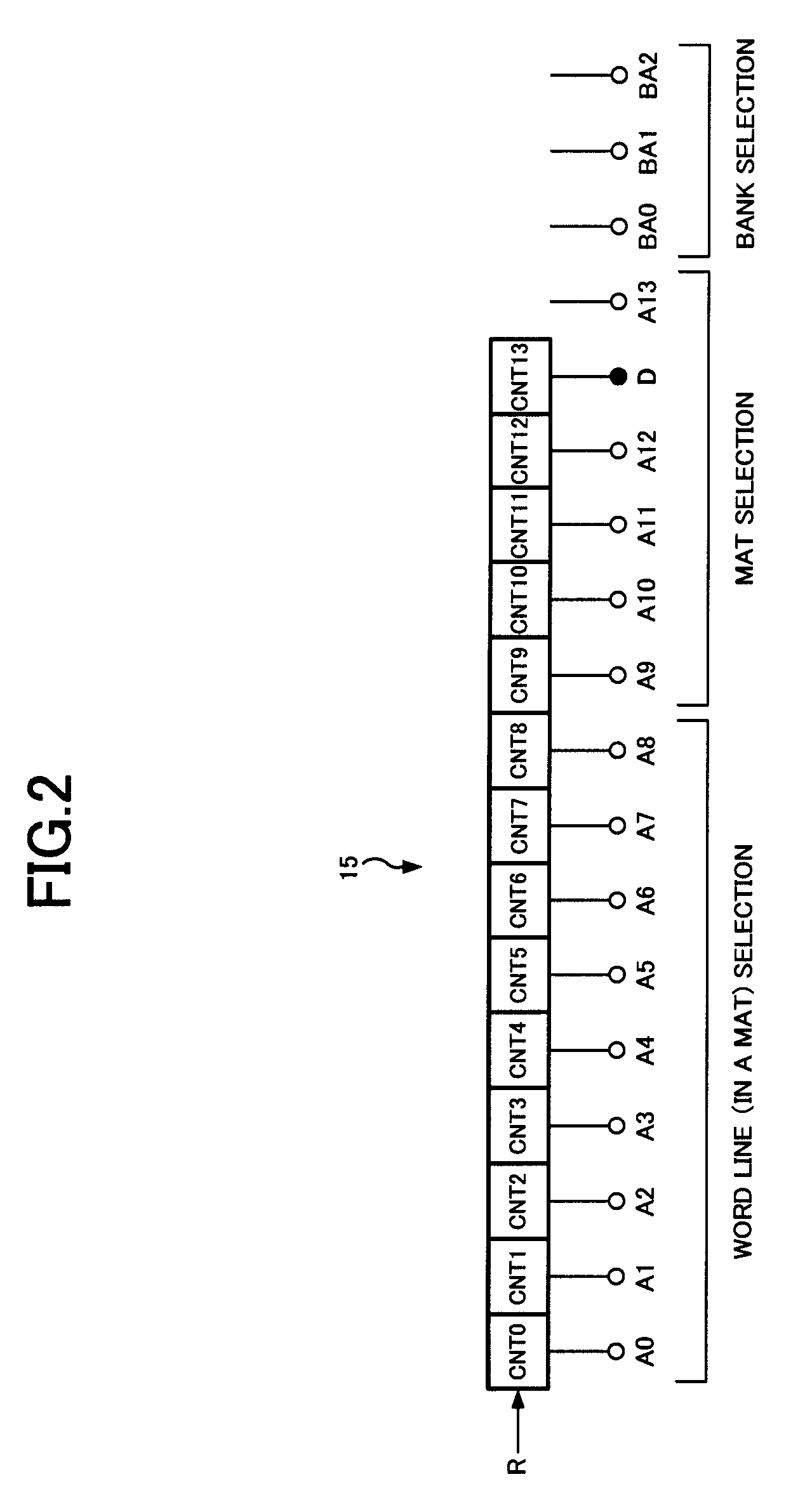Semiconductor memory device which controls refresh of a memory array in normal operation
a memory array and memory technology, applied in the direction of information storage, static storage, digital storage, etc., can solve the problems of insufficient data retention, insufficient refresh period 2sup>m/sup>t, and insufficient refresh period for actual value, so as to reduce consumption current, improve data retention characteristics, and simple configuration
- Summary
- Abstract
- Description
- Claims
- Application Information
AI Technical Summary
Benefits of technology
Problems solved by technology
Method used
Image
Examples
first embodiment
[0034]First, a configuration and operation of a DRAM of a first embodiment will be described. FIG. 1 is a block diagram showing a principal configuration of the DRAM of the first embodiment. The DRAM shown in FIG. 1 includes a memory array 10 having a large number of memory cells for storing data. Each memory cell included in the memory array 10 is formed at each intersection of a plurality of word lines and a plurality of bit lines arranged in a matrix form. The entire memory array 10 is divided into a plurality of banks (not shown) having the same size and the same configuration, and read / write operation can be controlled for each bank individually.
[0035]In the principal configuration shown in FIG. 1, a row decoder 11, a column decoder 12, a row address latch 13, a column address latch 14, a refresh counter 15, a switch unit 16 and a bank controller 17 are provided in addition to the memory array 10, and a control circuit 20 for controlling operation of these elements is provided....
second embodiment
[0054]Next, a configuration and operation of a DRAM of a second embodiment will be described. A principal configuration of the second embodiment is the same as that of the first embodiment, so description thereof will be omitted. Meanwhile, a relation between the refresh counter 15 and the row address in the second embodiment is different from that in the first embodiment, so description thereof will be made with reference to FIG. 5. As shown in FIG. 5, the refresh counter 15 of the second embodiment has the same configuration as the first embodiment in the respect that 1-bit counters CNT0 to CNT13 are connected in 14 stages and a 14-bit count value is output. On the other hand, in the second embodiment, the third stage counter CNT2 of the refresh counter 15 is assigned to the dummy bit D, and the other counters CNT0, CNT1, CNT3 to CNT13 are assigned to lower 13 bits A0 to A12 of the row address. That is, it differs in that the dummy bit D is located at the most significant bit in F...
third embodiment
[0062]Next, a configuration and operation of a DRAM of a third embodiment will be described. A principal configuration and a relation between the refresh counter 15 and the row address are the same as those of the second embodiment. In the third embodiment, the assigned row address is used similarly as the second embodiment, but it is a feature that control is performed such that the most significant bit A13 of the row address is switched between redundant and non-redundant states in refresh operation.
[0063]An example of refresh operation of the third embodiment will be described with reference to FIGS. 9 to 11 corresponding to FIGS. 6 to 8 of the second embodiment. In FIGS. 9 to 11, the refresh counter 15 operates in the same condition as FIGS. 6 to 9, and cases in which the N-ary counter 15a is set to quinary (FIG. 9), senary (FIG. 10) and septenary (FIG. 11) respectively are compared.
[0064]First, in a case of N=5 shown in FIG. 9, the bit A13 becomes non-redundant when counters CN...
PUM
 Login to View More
Login to View More Abstract
Description
Claims
Application Information
 Login to View More
Login to View More - R&D
- Intellectual Property
- Life Sciences
- Materials
- Tech Scout
- Unparalleled Data Quality
- Higher Quality Content
- 60% Fewer Hallucinations
Browse by: Latest US Patents, China's latest patents, Technical Efficacy Thesaurus, Application Domain, Technology Topic, Popular Technical Reports.
© 2025 PatSnap. All rights reserved.Legal|Privacy policy|Modern Slavery Act Transparency Statement|Sitemap|About US| Contact US: help@patsnap.com



